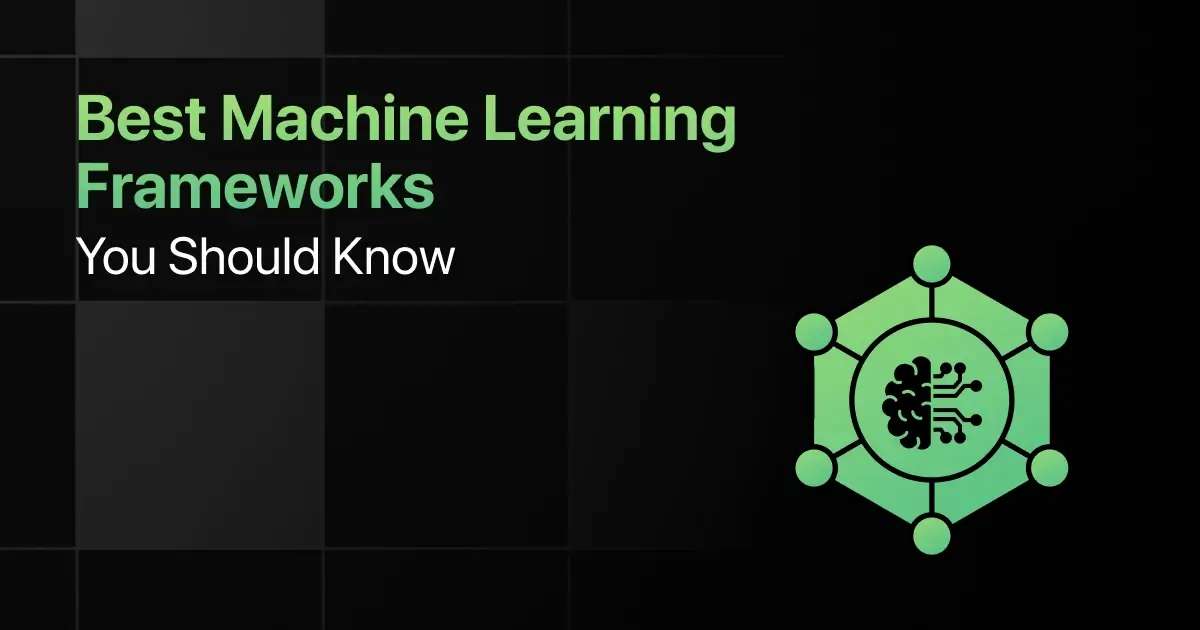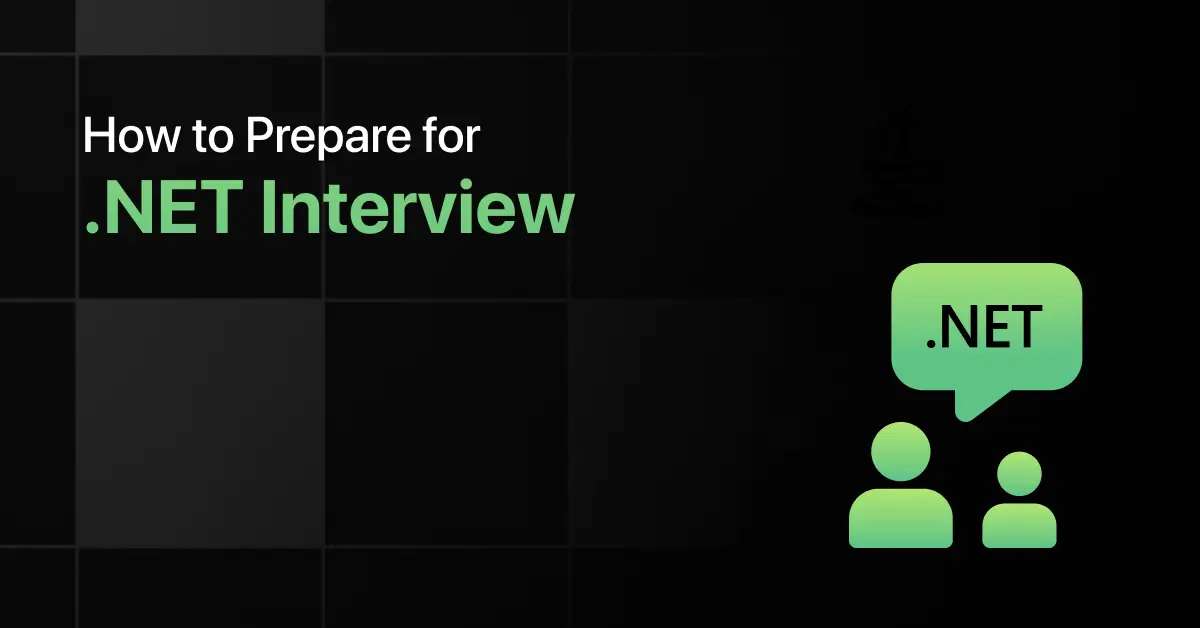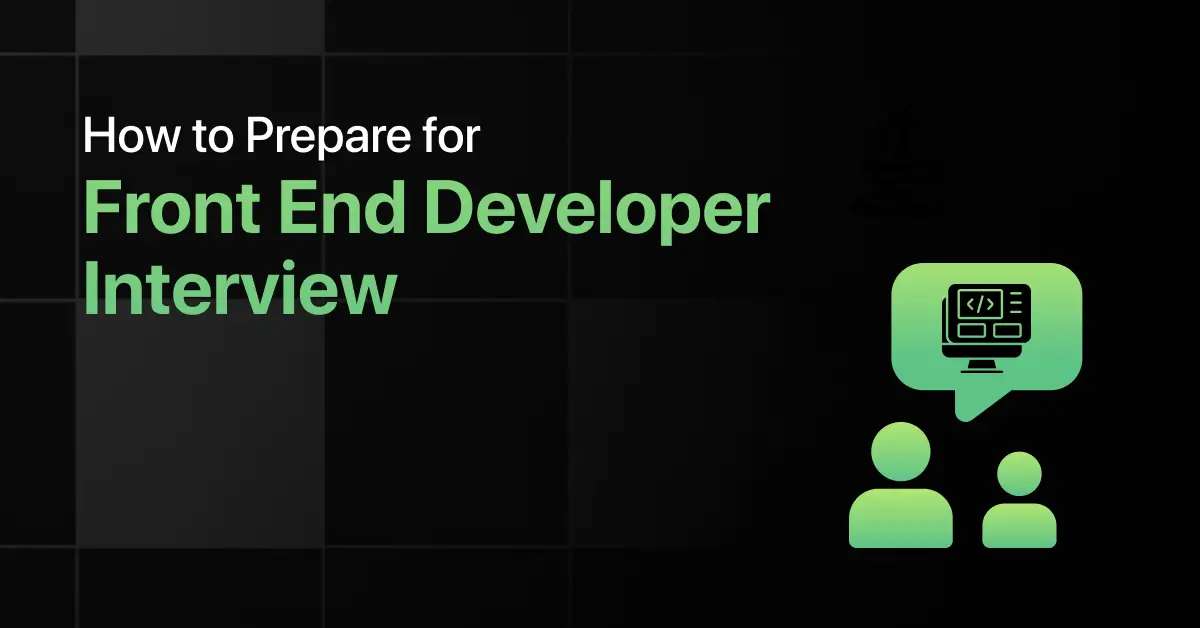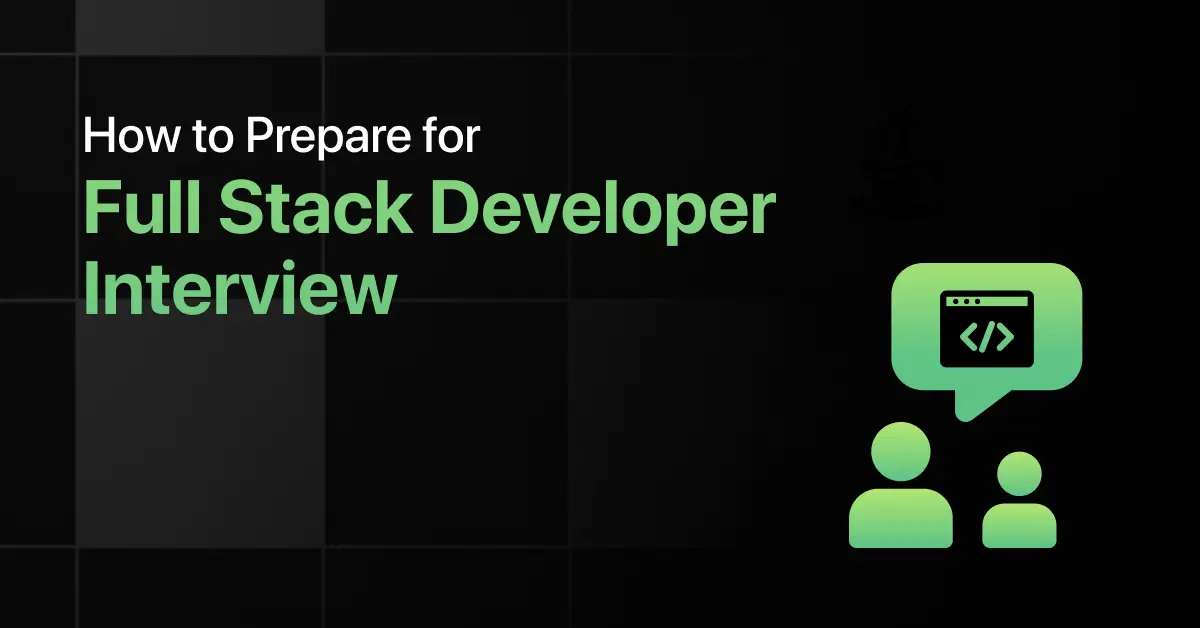Best Machine Learning Frameworks You Should Know

Machine learning frameworks are essential tools for developers. They provide a structured foundation to build intelligent applications.
This blog will explore a machine learning framework list and highlight the unique features of the best machine learning frameworks and libraries.
If you’re looking for machine learning frameworks for beginners or aiming to conduct a machine learning frameworks comparison, this guide has you covered.
Top Machine Learning Frameworks – Overview
Here’s an overview of the 10 best frameworks for machine learning:
| S.No. | Framework Name | Key Features | Ease of Integration | Download Link |
|---|---|---|---|---|
| 1 | TensorFlow | Flexible Architecture, Extensive Library | Medium | Download |
| 2 | PyTorch | Dynamic Computation, Easy Debugging | Easy | Download |
| 3 | Scikit-learn | Simple and Efficient, Wide Range of Algorithms | Easy | Download |
| 4 | Keras | User-friendly API, Supports Multiple Backends | Easy | Download |
| 5 | XGBoost | High Performance, Scalability | Medium | Download |
| 6 | LightGBM | Fast Training, Low Memory Usage | Medium | Download |
| 7 | CatBoost | Handling of Categorical Features, Fast and Scalable | Medium | Download |
| 8 | Apache MXNet | Scalable and Efficient, Supports Multiple Languages | Medium | Download |
| 9 | Caffe | High Performance, Modular Architecture | Medium | Download |
| 10 | Theano | Efficient Computation, GPU Acceleration | Medium | Download |
Most Popular Machine Learning Frameworks You Should Know
Below are the top 10 machine learning frameworks you should know:
1. TensorFlow
TensorFlow is an open-source machine learning framework developed by Google, known for its flexibility and comprehensive ecosystem.
It supports a wide range of applications from research to production.
Popularity:
- Widely adopted by researchers and enterprises.
- Extensive community support.
- Used in numerous real-world applications.
Key Features:
- Flexible architecture
- Extensive library of pre-built models
- Support for both CPU and GPU
Learning Curve: Medium
Performance: High performance with optimized execution
Compatibility:
- Supports Python, C++, and JavaScript.
- Integrates with Keras, TensorBoard, and other tools.
Ease of Integration: Medium
Use Cases and Industry Adoption:
- Image and speech recognition
- Natural language processing
- Recommender systems
Job Market Demand:
- High demand in tech companies and research institutions.
- Used in AI, healthcare, and finance industries.
- Preferred for scalable machine learning projects.
2. PyTorch
PyTorch is an open-source machine learning library developed by Facebook’s AI Research lab.
It is known for its dynamic computation graph and ease of use, making it popular among researchers.
Popularity:
- Rapidly growing in popularity.
- Preferred by researchers and academia.
- Strong community support.
Key Features:
- Dynamic computation graph
- Easy debugging
- Strong support for GPU acceleration
Learning Curve: Easy
Performance: High performance with flexible computation
Compatibility:
- Supports Python and C++.
- Integrates with other PyTorch libraries and tools.
Ease of Integration: Easy
Use Cases and Industry Adoption:
- Deep learning research
- Computer vision
- Natural language processing
Job Market Demand:
- Increasing demand in research and development.
- Used by tech giants and startups.
- Preferred for flexible and rapid prototyping.
3. Scikit-learn
Scikit-learn is an open-source machine learning library for Python, built on NumPy, SciPy, and Matplotlib.
It is designed for easy implementation and integration of various machine learning algorithms.
Popularity:
- Widely used in academia and industry.
- Preferred for traditional machine learning tasks.
- Strong community support.
Key Features:
- Simple and efficient tools
- Wide range of algorithms
- Easy integration with other Python libraries
Learning Curve: Easy
Performance: Good performance for small to medium datasets
Compatibility:
- Supports Python.
- Integrates well with NumPy, Pandas, and Matplotlib.
Ease of Integration: Easy
Use Cases and Industry Adoption:
- Data analysis
- Predictive modeling
- Feature engineering
Job Market Demand:
- High demand in data science and analytics.
- Used in finance, healthcare, and marketing.
- Preferred for quick implementation of ML algorithms.
4. Keras
Keras is an open-source neural network library written in Python, designed to be user-friendly, modular, and extensible.
It acts as an interface for TensorFlow.
Popularity:
- Widely used for building neural networks.
- Preferred by beginners and researchers.
- Strong community support.
Key Features:
- User-friendly API
- Supports multiple backends
- Modular and extensible
Learning Curve: Easy
Performance: High performance with TensorFlow backend
Compatibility:
- Supports Python.
- Integrates with TensorFlow and other backends.
Ease of Integration: Easy
Use Cases and Industry Adoption:
- Image and text processing
- Neural network building
- Research and prototyping
Job Market Demand:
- High demand in AI and deep learning roles.
- Used by tech companies and startups.
- Preferred for rapid development of neural networks.
5. XGBoost
XGBoost is an open-source library that provides an efficient and scalable implementation of gradient-boosting algorithms.
It is widely used for structured or tabular data.
Popularity:
- Widely adopted in competitive machine learning.
- Preferred for its high performance.
- Strong community support.
Key Features:
- High performance
- Scalability
- Flexibility with various objective functions
Learning Curve: Medium
Performance: Exceptional performance with large datasets
Compatibility:
- Supports Python, R, Java, and C++.
- Integrates with various machine learning libraries.
Ease of Integration: Medium
Use Cases and Industry Adoption:
- Predictive modeling
- Classification and regression tasks
- Kaggle competitions
Job Market Demand:
- High demand in data science and competitive ML.
- Used in finance, healthcare, and marketing.
- Preferred for high-performance modeling.
6. LightGBM
LightGBM is an open-source, high-performance gradient-boosting framework based on decision tree algorithms.
It is designed for distributed and efficient training.
Popularity:
- Increasingly popular in competitive ML.
- Preferred for large datasets.
- Strong community support.
Key Features:
- Fast training speed
- Low memory usage
- High accuracy
Learning Curve: Medium
Performance: Exceptional performance with large datasets
Compatibility:
- Supports Python, R, and C++.
- Integrates with various data science tools.
Ease of Integration: Medium
Use Cases and Industry Adoption:
- Large-scale data processing
- Classification and regression tasks
- Predictive modeling
Job Market Demand:
- High demand in data-intensive industries.
- Used in finance, e-commerce, and marketing.
- Preferred for efficient and scalable modeling.
7. CatBoost
CatBoost is an open-source gradient boosting library by Yandex. It is designed to handle categorical features naturally and is known for its high performance.
Popularity:
- Growing in popularity for handling categorical data.
- Preferred for its ease of use.
- Strong community support.
Key Features:
- Handling of categorical features
- Fast and scalable
- High accuracy
Learning Curve: Medium
Performance: Exceptional performance with categorical data
Compatibility:
- Supports Python, R, and C++.
- Integrates with various data science tools.
Ease of Integration: Medium
Use Cases and Industry Adoption:
- Classification and regression tasks
- Handling large datasets with categorical features
- Predictive modeling
Job Market Demand:
- Increasing demand in data science.
- Used in finance, marketing, and e-commerce.
- Preferred for tasks involving categorical data.
8. Apache MXNet
Apache MXNet is an open-source deep-learning framework designed for efficiency and flexibility.
It is scalable and supports multiple languages.
Popularity:
- Widely used for deep learning applications.
- Preferred for its scalability.
- Strong community support.
Key Features:
- Scalable and efficient
- Supports multiple languages
- Flexible architecture
Learning Curve: Medium
Performance: High performance with optimized execution
Compatibility:
- Supports Python, Scala, C++, and more.
- Integrates with other Apache projects.
Ease of Integration: Medium
Use Cases and Industry Adoption:
- Deep learning research
- Image and speech recognition
- Natural language processing
Job Market Demand:
- High demand in AI research and development.
- Used by tech giants and startups.
- Preferred for scalable deep learning projects
9. Caffe
Caffe is a deep learning framework made with expression, speed, and modularity in mind.
It is developed by the Berkeley Vision and Learning Center (BVLC).
Popularity:
- Popular in academic research.
- Preferred for computer vision tasks.
- Strong community support.
Key Features:
- High performance
- Modular architecture
- Easy to use
Learning Curve: Medium
Performance: High performance with optimized computation
Compatibility:
- Supports C++ and Python.
- Integrates with various deep-learning libraries.
Ease of Integration: Medium
Use Cases and Industry Adoption:
- Computer vision
- Image classification
- Deep learning research
Job Market Demand:
- High demand in computer vision research.
- Used by research institutions and tech companies.
- Preferred for image-based deep learning projects.
10. Theano
Theano is a Python library that allows you to define, optimize, and evaluate mathematical expressions involving multi-dimensional arrays efficiently.
It is known for its speed and stability.
Popularity:
- Widely used in academic research.
- Preferred for mathematical computations.
- Strong community support.
Key Features:
- Efficient computation
- GPU acceleration
- Integration with NumPy
Learning Curve: Medium
Performance: High performance with efficient execution
Compatibility:
- Supports Python.
- Integrates with other scientific computing libraries.
Ease of Integration: Medium
Use Cases and Industry Adoption:
- Deep learning research
- Mathematical computations
- Neural network development
Job Market Demand:
- High demand in academic and research settings.
- Used by research institutions and tech companies.
- Preferred for computational efficiency.
Final Words
For beginners, starting with the recommended machine learning frameworks in this blog can ease your learning curve.
Mastering the top 10 machine learning frameworks will equip you with the knowledge and tools to build scalable intelligent applications.
Explore More Machine Learning Resources
- Machine Learning Websites
- Machine Learning YouTube Channels
- Machine Learning Project Ideas
- Machine Learning Programming Languages
Explore More Frameworks
- Java
- Python
- JavaScript
- HTML
- CSS
- Web Development
- Mobile App Development
- Automation Testing
- PHP
- C Programming
- Unit Testing
- Big Data
- Ruby
- Data Science
- DevOps
- Blockchain
- Golang
FAQs
The best machine-learning frameworks to use are:
- TensorFlow
- PyTorch
- Scikit-learn
- Keras
- XGBoost
The key features that you should look for in a machine-learning framework are scalability, ease of use, flexibility, community support, and comprehensive documentation.
Scikit-learn and Keras are the easiest machine-learning frameworks to learn for beginners.
Common use cases include deep learning (TensorFlow, PyTorch), traditional machine learning (Scikit-learn), and boosting algorithms (XGBoost).
Some lightweight machine-learning frameworks for rapid application development are Scikit-learn, LightGBM, and Keras.
Top companies use TensorFlow, PyTorch, and Scikit-learn for their machine-learning projects.
There is a high demand for skills related to TensorFlow, PyTorch, and Scikit-learn in the job market, especially in tech and data-driven industries.
Related Posts


How to Prepare for .Net Interview
Are you preparing for a .NET interview but not sure which topics to prioritize? Many candidates struggle to balance C# fundamentals, …
Warning: Undefined variable $post_id in /var/www/wordpress/wp-content/themes/placementpreparation/template-parts/popup-zenlite.php on line 1050









